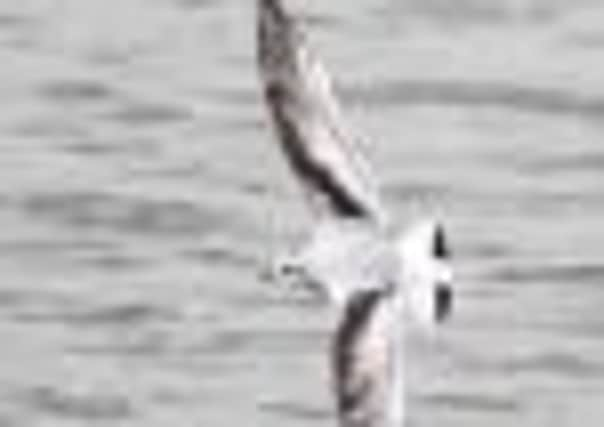Birdwatch: A little goes a long way for the winter


Two of the best three places in the country to see them are in Yorkshire – at Hornsea Mere and at the Tophill Low reserve, East Yorkshire.
They are on the move from the Baltic to spend the winter around the western seaboards of Europe, and numbers will increase from now until the end of September.
Advertisement
Hide AdAdvertisement
Hide AdAlready, more than 3,000 have been seen offshore at Hornsea, with more than 500 at the Mere, while 37 were seen at the weekend at Tophill Low and 200 off the Spurn Point reserve.
Unlike the larger gull species, their size and thin bills make it impossible for little gulls to scavenge, steal or attack other birds and mammals.
Instead, they have adapted the lifestyle of the smaller terns – in summer feeding on dragon, caddis and May flies, and in winter switching to a diet of small fish and marine invertebrates.
They also feed like terns, swooping low over the water and suddenly dropping down to the surface to snatch a meal in mid-flight, and they often breed alongside black and white-winged black terns on shallow freshwater marshes in north-western and north-central Europe.
Advertisement
Hide AdAdvertisement
Hide AdThere has been the occasional breeding attempt in this country, including a pair at Fairburn Ings in 1978 that established themselves among a colony of black-headed gulls, built a nest and started to incubate eggs until one of the adults was found dead after which the other deserted the nest which was predated by crows.
The European population is growing larger so perhaps there will be other breeding attempts here, particularly with more new wetland reserves being created.
An adult marsh sandpiper, has remained at the RSPB’s Blacktoft Sands reserve, only the second one seen there.
Marsh sandpipers, a smaller more elegant version of the greenshank, with a long fine bill and very long yellowish legs, breed from the easternmost parts of Europe to central Asia and winter in south-east Asia and Africa.
Advertisement
Hide AdAdvertisement
Hide AdThere is also a good selection of other waders on the reserve, including wood, green and common sandpipers, greenshanks, ruff, black-tailed godwits and spotted redshanks.
A series of events to see them are being held at Blacktoft Sands, including Wader Wednesdays every fortnight from July 27 between 11am and 4pm, when guides will be on hand to explain different features of each species.
The cost is £3, free for RSPB members; join in at any time of the day.
Wader walks are being held on July 30 and August 6 from 9am to 11am at a cost of £4 per person. Booking for these is essential – ring 01 405 704665 or email [email protected]
Advertisement
Hide AdAdvertisement
Hide AdMore bearded tits, including orange-coloured juveniles, are being seen at the edges of lagoons on the reserve, and up to 13 little egrets have also been seen.
Four little egrets are present at Fairburn Ings and at least five at Swillington Ings, near Leeds, where there are also regular sightings of a bittern.
There were four green sandpipers and up to 11 greenshank, the largest count for this wader ever recorded on the reserve, at Potteric Carr, near Doncaster.
A black-necked grebe was also present, while an adult red-necked grebe has been seen at Wintersett reservoir, West Yorkshire.
Advertisement
Hide AdAdvertisement
Hide AdTwo spoonbills are still present at Fairburn Ings and two at Blacktoft Sands, while another has been seen at the Saltholme reserve on Teesside.
Two pairs of turtle doves are calling along the new River Trail, at Fairburn Ings, while cuckoos are still present on the reserve.